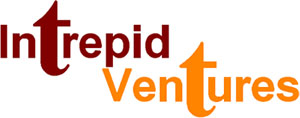March 19, 2019 the EU mandated enhanced disclosure requirements on currency-conversion fees for banks, merchants and ATMs. The landmark pro-consumer reform will take effect in April, 2020 and should reduce the number of consumers fleeced by Dynamic Currency Conversion (DCC).
Competition and inadequate disclosure requirements have fueled an explosion of DCC, a service permitting cardholders for a fee to pay in their familiar home rather than the local currency. Between 2013 and 2017 the number and value of DCC transactions in the EU increased 118% and 65% respectively. The average EU DCC transaction declined from €128 to €85, reflecting it’s becoming increasingly mainstream.
DCC is a scourge for unsuspecting consumers. The Norwegian Consumer Council blasted DCC as “of hardly any value or benefit to consumers.” Its survey of DCC users found 99.7% were worse off (paid more), with the highest DCC markup being a whopping 12.4%. If there’s a scintilla of consumer value, it’s in the momentary false comfort consumers may take immediately seeing payment in their native currency, not knowing the markup over what they would have paid in the local currency.
With most payment products and services sufficiently transparent market competition ruthlessly polices the industry, continually reallocating resources to those delivering more value. The market self-corrects, purging products consumers don’t value. However, under the current DCC-disclosure regime, competition renders the problem worse, rewarding payment processors, merchants and ATMs for fleecing consumers and punishing those that don’t. DCC payments are quick one-off transactions. Cardholders are fleeced and none the wiser. Consumers don’t know they’ve been gouged. Consequently, merchants and ATMs not offering DCC leave money on the table, typically 400 to 500 basis points, but often considerably more, as much as merchants think they can get away with. Acquirers not offering it would lose merchants and forego profits.
Behavioral nudges like highlighting the preferred DCC option in green encourage use. Presenting a payment option in consumers’ native currency is a behavioral shove.
DCC preys on consumers’ greater comfort transacting in their familiar native currency, and ignorance of the economics of their alternative, paying in the local currency. Paying in merchants’ currency they would enjoy close to the wholesale exchange rate through networks like American Express, Mastercard and Visa, and then, depending on their issuer, possibly, pay a disclosed foreign-exchange markup or cross-border fee. When DCC is offered the price in both the cardholder’s and the local currencies and the exchange rate are displayed at the point of sale or ATM.
Most regulators haven’t been interested in DCC because it’s foreigners being fleeced and national merchants and processors profiting. The supranational EU took an interest because with 11 currencies millions of EU consumers are fleeced by DCC by merchants and ATMs in the EU every year. Plus, DCC increases the cost of intra-EU payments, and, is thereby a deadweight loss for its economy.
The EU will require DCC markups be disclosed as a percentage over the ECB’s benchmark foreign-exchange rate, and, that issuers, separately, notify cardholders of any foreign-exchange markups as percentage over the central bank’s benchmark rate. It’s an improvement. Better yet however would have been to insist on side-by-side markup disclosures of bank and DCC markups before payment. Banks contended providing their foreign-exchange fees at the point of sale would be burdensome. Fair enough. But just disclosing markups as percentages – arguably more useful for comparison purposes – would be a relatively modest effort. Tables with issuer markups, kept at the networks and/or merchant processors offering DCC.
Consumers have relationships with their banks. Cross-border fees and foreign-exchange markups are disclosed on statements, and subject to considered review. Issuing banks outside the EU substituted cross-border for currency-conversion fees on payments abroad to avoid being disintermediated by DCC. Some issuers offer and advertise no cross-border fees. Within the EU some but not all issuers charge foreign-exchange fees. For its Freedom Rewards Visa credit card Barclays charges a 2.99% fee for nonsterling transactions. Clydesdale’s B Mastercard credit card charges no foreign-exchange fees. Santander’s Zero Mastercard credit card similarly has no foreign-exchange fees. Cardholders have choices.
While the EU has taken a step to protect consumers from DCC, industry self-policing is the only viable global solution. Only global networks Mastercard and Visa can protect cardholders worldwide.
Mastercard banned DCC on multi-currency prepaid cards issued for use abroad loaded with the merchant’s currency. April 13th Visa went a step further banning DCC on all consumer travel prepaid and debit cards, including multi-currency prepaid cards, no matter the currencies loaded. Nonetheless, the global payment networks have been reluctant to use their market power to ban DCC, fearing it would provoke anti-trust complaints. It would however be well-nigh impossible for regulators to object to their mandating pricing-transparency for consumers.
The more sunlight put on DCC on both sides of the network the fewer consumers will be gouged. Sufficient sunlight will destroy the DCC industry.

